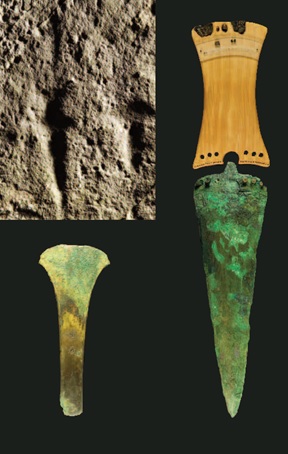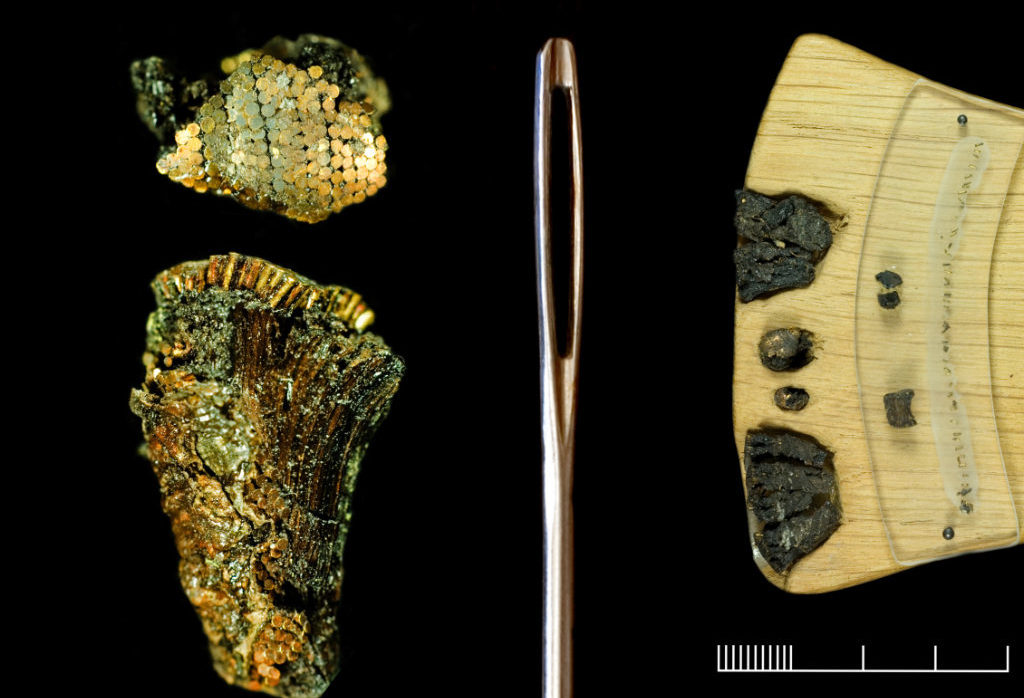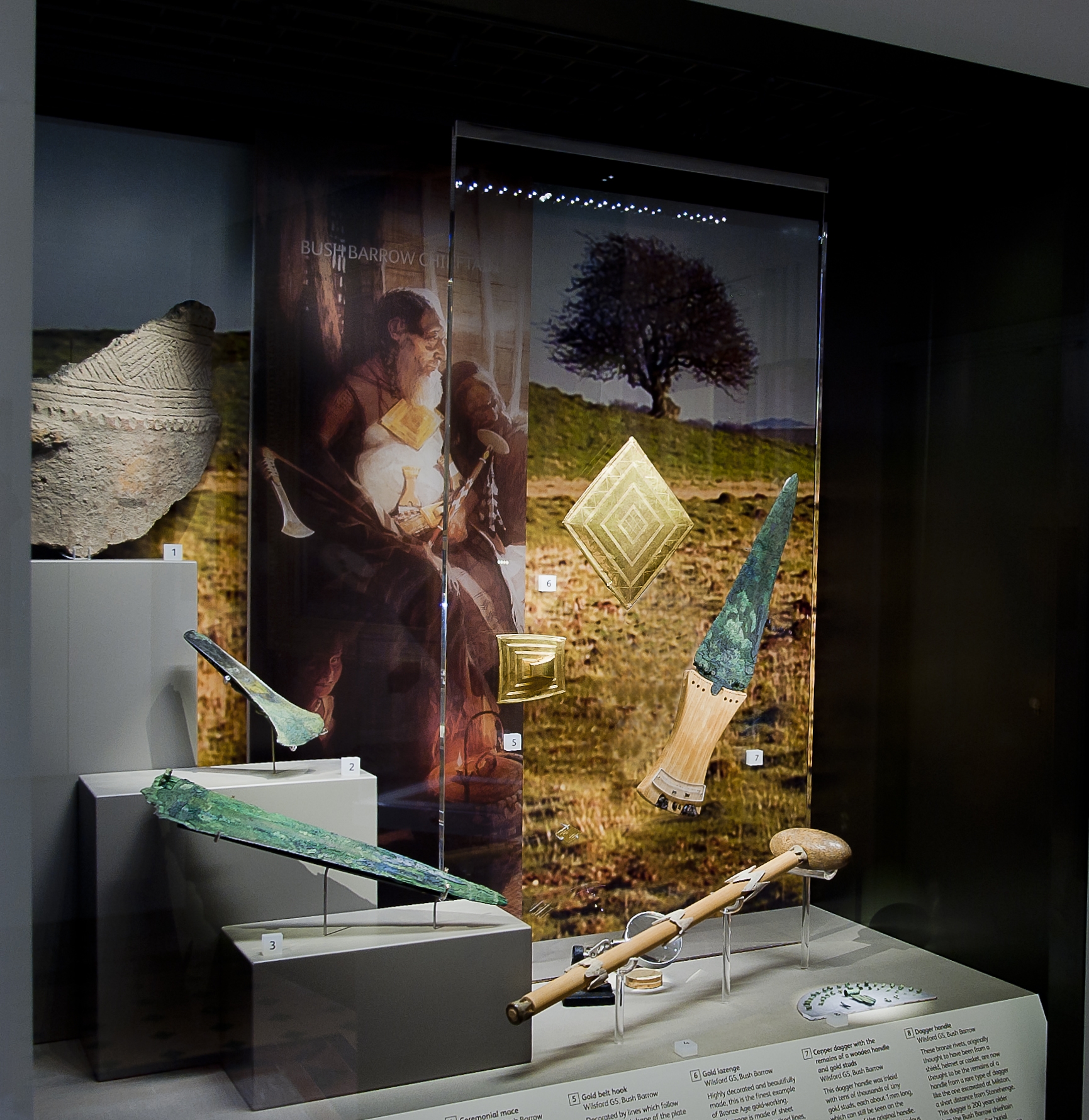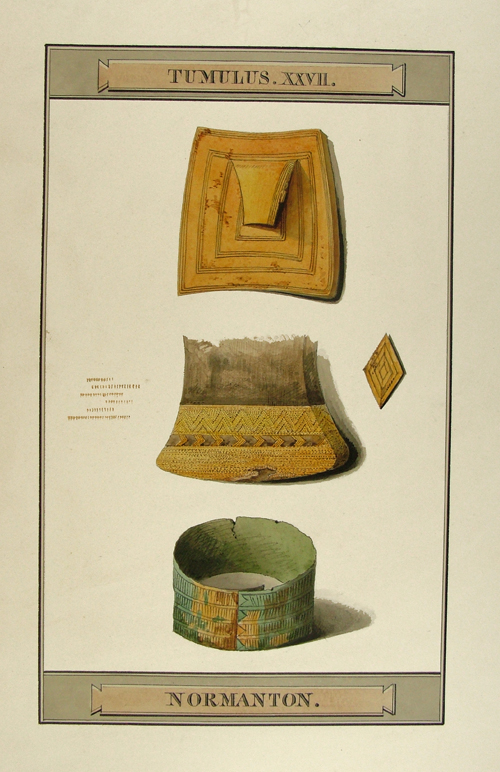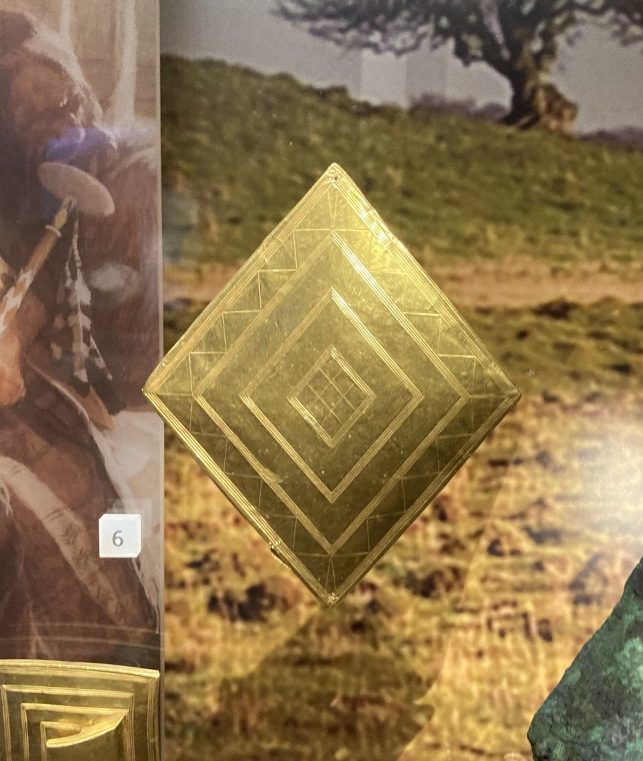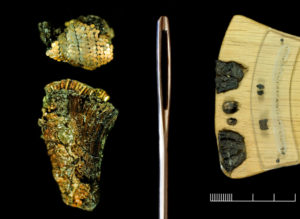
See the studs under a microscope in comparison with a needle. (Click on the image to open full-screen in a new page).
The results are now in! Did the Bronze Age gold, found in a burial close to Stonehenge, came from Britain, Ireland or Brittany.
Located close to Stonehenge, Bush Barrow is Britain's richest Bronze Age burial. The most remarkable discovery was a gold-studded dagger pommel, set with thousands of microscopic gold studs thinner than a human hair. Using a recently developed scientific technique, Dr Chris Standish of Southampton University, has identified the most likely source of the gold used to make this amazing object - answering a question that has puzzled archaeologists for decades?
Dr Standish has developed a metallurgical technique that analyses the proportions of different isotopes within the lead impurities in the gold. These proportions were compared with information about gold from known sources in Ireland, Cornwall, Wales and Brittany. A single gold stud was used for the analysis using X-ray Fluorescence - a non-destructive technique.
The blade of the Bush Barrow dagger is of a type found in both Brittany and Britain and gold-studded pommels have been found on both sides of the English Channel. Some archaeologists have thought that the dagger pommel was made in Brittany as more have been found in Brittany but the craft skills needed to make the dagger pommel are higher than used in any other goldwork in either Britain or France at this early date.
The dagger was buried with a Chieftain who died in about 1950BC at a time when Stonehenge was at the centre of an internationally important ceremonial landscape - the sarsen stone trilithons were erected in about 2,500BC and the bluestones from Wales were placed in their final positions at the site in about 1,600BC before Stonehenge finally went out of use in about 1,500BC.
Analysis undertaken 30 years ago of gold objects from burials in the Stonehenge landscape suggested that the gold used came from Ireland. Analysis by Dr Standish of gold objects found in Ireland has shown that many are made of gold from Cornwall (see this article in the Independent by David Keys) and gold from Cornwall was also used in the famous Nebra Sky Disk found in Germany and displayed at the State Museum of Prehistory in Halle (see this article about the analysis of the Sky Disk).
Dr Standish at the Wiltshire Museum talked about the results of his analysis at a lecture at the Wiltshire Museum on Saturday 16 November - watch this video to hear him talk about the results!
Images copyright: University of Birmingham / David Bukach.
See more images

Dagger and axe carved on Stonehenge compared with the finds from Bush Barrow.

Microscopic view of the studs with a needle for scale.

Finds from Bush Barrow on display

Watercolour showing the dagger pommel when excavated in 1808
Dr Chris Standish talks about the results …
Find out more about the dagger
Bush Barrow Lozenge
This man, buried close to Stonehenge, was given Britain’s richest Bronze Age burial in around 1950 BC. Described as a ‘stout and tall man’, he
- 1
- 2
Crowdfunder
We are grateful to the supporters of our Crowdfunder that made this research possible.


